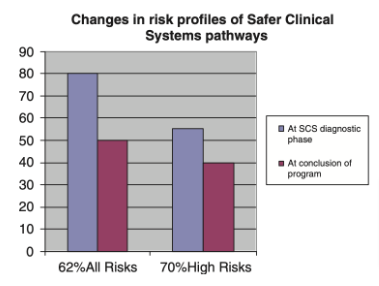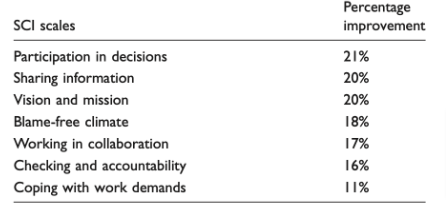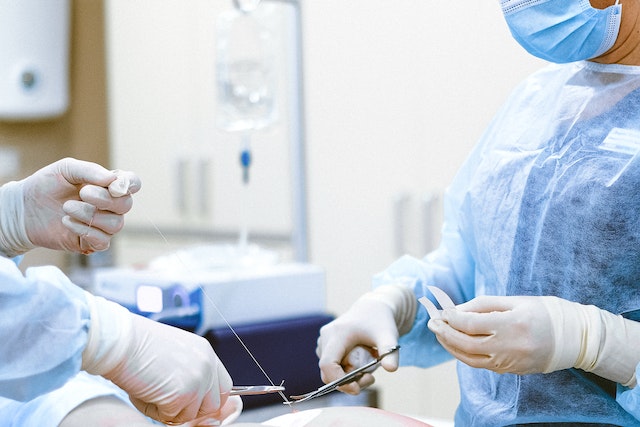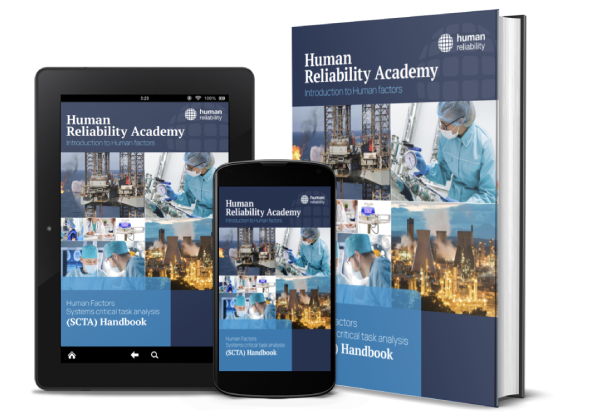For this national safety project funded by The Health Foundation, Human Reliability ported safety and human factors tools and techniques to eight large acute Trusts in the UK National Health Service. This major patient safety initiative aimed to:
“A chief characteristic of the Safer Clinical Systems approach is a focus on managing clinical risk. This is achieved through a proactive focus on risk and its identification in a patient pathway, in contrast to the traditional focus on counting things that have already gone wrong for patients. This is because, as in other safety- critical industries, there is a recognition that safety depends upon the management of risk.”
Our key measures centred on the profile of risk in patient pathways and on cultural parameters accessed through the Safety Culture Index and several other measures.
Our results, as detailed in the graphs below, show that in the area of risk Safer Clinical Systems reduced patient risk proactively. We also found that many key cultural factors, measured by the Safety Culture Index (SCI) improved significantly.


Despite safety concerns over decades, the percentage of inpatients suffering adverse events remains constant in most advanced health systems. Incident reporting, as used in other safety critical industries, has proved comparatively ineffective in healthcare. This key safety programme adopted a new patient safety paradigm. Underpinned by a holistic use of human factors the Safer Clinical Systems programme applied a proactive, risk- based approach seeking to eliminate or control risk before it results in harm to patients.
Human Reliability provided programme design, technical support on all sites and part of the evaluative methodology.


Despite safety concerns over decades, the percentage of inpatients suffering adverse events remains constant in most advanced health systems. Incident reporting, as used in other safety critical industries, has proved comparatively ineffective in healthcare. This key safety programme adopted a new patient safety paradigm. Underpinned by a holistic use of human factors the Safer Clinical Systems programme applied a proactive, risk- based approach seeking to eliminate or control risk before it results in harm to patients.
Human Reliability provided programme design, technical support on all sites and part of the evaluative methodology.

Human Reliability played a leading role in applying formal safety and human factors techniques to eight, and subsequently 12, large acute NHS Trusts. Our aims were to firstly diagnose the system, focusing on a patient’s pathway through the healthcare organisations and where they were at risk.
After diagnosis, we worked closely with clinical and management teams and through workshops, training and support on site to carry out detailed critical task and risk evaluation – frequently surfacing risks previously unrecognised and always bringing out the tacit knowledge of staff and teams.
In using these tools and techniques, we drew heavily on established practices from other safety-critical sectors – in particular the use of task and error analysis – and sought to develop proactive approaches to risk and safety management. We focused on system design, where many “error traps” or avoidable risk is determined, but also on “non-technical skills” such as communication, situational awareness and decision-making.
Get the latest newsletter by signing-up today





This free 30 minute mini-course will introduce you to Human Factors, and how critical task reviews are used to improve the quality and safety of tasks and processes across different industries.
It’s free, informative and you’ll even get a certificate of completion.


This short and engaging handbook provides a great overview of Human Factors Systems Critical Task Analysis (SCTA) and how it helps people across sectors reduce error and improve human performance.
SCTA can help keep people safe and delivers value.


Popular Pages
© Human Reliability 2025.
1 School House, Higher Lane,
Dalton, Lancashire,
WN8 7RP, UK.
T: +44 (0) 1257 463 121
E: [email protected]